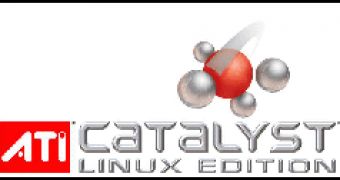A new version of the ATI/AMD Linux display driver was just released a few minutes ago for both x86 and x86_64 platforms. I think many users have been waiting for this, as this new version brings back support for the Fedora 7 Linux distribution! Here is a guide on how to install the ATI video drivers on Fedora 7.
Issues resolved in this release:
■ The kernel module build no longer fails on kernel version 2.6.22. ■ Starting AMD CCC-LE no longer fails with a floating-point exception when started in certain configurations. ■ When playing videos in I420 color format using the Xv extension and TexturedVideo (the default on R5xx), colors are no longer displayed incorrectly. ■ Running aticonfig --initial in X with the Vesa driver no longer segfaults resulting in the xorg.conf file not being available.
Known issues of this release
■ Video Tearing may be seen during playback in XV using GLESX. ■ A black screen may be observed on some hardware when switching to the console or leaving the X window system when a Vesa framebuffer console driver is used. ■ Corruption may be observed with certain applications on some Linux distributions which enable the Composite extension by default, e.g., RHEL 5. If you notice some application corruption, please disable the Composite extension. ■ Using the xgl enabled x-server interface disables display switching hot plug support ■ There is no support for video playback on the second head in dual head mode.
In order to gain the best performance and ease of use, ATI/AMD recommends the following:
■ Kernel module build environment - should include the following: Kernel source code: either the Kernel Source or Kernel Headers packages ■ ISSE Support enabled in your Linux Kernel (applies to Intel Pentium III and later CPUs only; enabled by default on version 2.4 and later kernels) ■ The rpm utility should be installed and configured correctly on your system, if you intend to install it via RPM packages;
Requirements:
■ XOrg 6.7, 6.8, 6.9, 7.0, 7.1 or 7.2; XFree86 version 4.3 ■ Linux kernel 2.4 or higher ■ glibc version 2.2 or 2.3 ■ POSIX Shared Memory (/dev/shm) support is required for 3D applications
For installation instructions and more information about this release, please go here.
You can download the ATI/AMD Linux Display Driver now from Softpedia.

 14 DAY TRIAL //
14 DAY TRIAL //